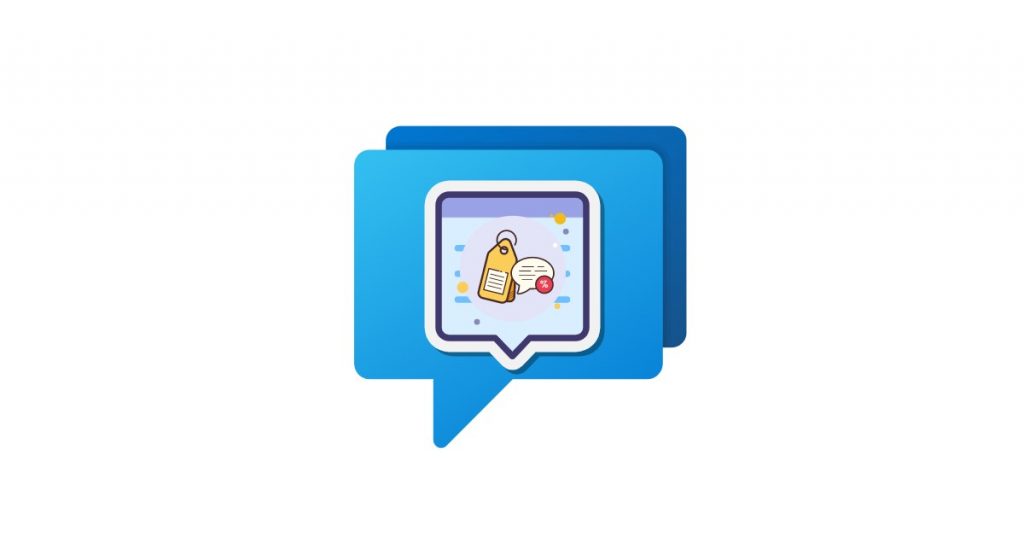Your customers are everywhere – on Instagram, browsing your website, texting through WhatsApp, or checking out your latest email.
And they expect your business to be everywhere, too. In fact, 86% of consumers expect seamless communication across multiple channels when interacting with customer support.
They want to start a conversation on social media and continue it over email, all without having to reintroduce themselves or repeat the same information. Sounds like a lot, right?
So, what exactly is omnichannel messaging, and why is it such a big deal?
In simple terms, it’s about making sure your customers can reach you on multiple platforms, whether that’s on social media, your website, email, or live chat.
If you’re not taking advantage of it, you could be missing out on higher customer satisfaction rates and even better sales. So, keep reading to find out why omnichannel messaging is a must-have for your business and how it can transform the way you connect with your customers.
What Is Omnichannel Messaging?
Omnichannel messaging is a customer communication strategy that lets businesses connect with their customers across various platforms like social media, live chat, email, and SMS. It ensures a unified experience, so they get the same quality service no matter how they reach out.
It means that wherever your customer starts the conversation, they can easily pick it up on another platform and it feels like one smooth, connected experience.
Think of it like this: Your customer might start by asking a question on your website’s live chat, then later follow up via email, and maybe even reach out through Instagram DMs.
With omnichannel messaging, all these interactions are synced up so the customers don’t have to explain themselves over and over again.
Key components
The key features of omnichannel messaging are:
- Multiple touchpoints: Interactions happen across live chat, email, social media, SMS, and more.
- Consistency: The experience is the same across all platforms, with no need for the customer to repeat themselves.
- Integration: All channels are linked, so conversations flow seamlessly no matter where the customer starts or ends.
- Customer autonomy: The customer decides which omnichannel messaging platform they want to communicate on.
Omnichannel Messaging vs. Multichannel Messaging
Omnichannel is often used interchangeably with multichannel messaging, but they’re not the same thing.
Omnichannel messaging ensures that everything is connected. You get the same cohesive experience across the board, no matter where you’re chatting.
Multichannel messaging means you’re available on multiple platforms, but each platform operates independently. In other words, conversations from different platforms are not integrated.
So, a customer could email you and then reach out on social media, but those two conversations might be treated as totally separate.
Here’s a quick summary of their differences:
- Integration: Omnichannel messaging integrates all channels, while multichannel keeps them separate.
- Customer experience: Omnichannel messaging focuses on delivering a consistent and smooth experience across all touchpoints. Multichannel focuses more on maximizing the number of channels available without necessarily linking them.
- Data sharing: In an omnichannel setup, data is shared across channels, allowing customer service teams or chatbots to maintain context. In a multichannel setup, this information often stays in the respective platform.
Key Benefits of Omnichannel Messaging for Businesses
If you’re still on the fence about adopting an omnichannel messaging strategy, here are a few reasons why it can seriously benefit your business:
Reach more customers on their preferred channels
Your customers aren’t all hanging out in the same place. Some might prefer Instagram DMs, others live chat on your website, and some still love a good old email. With omnichannel messaging, you’re meeting customers where they feel most comfortable, making it easier for them to connect with you on their terms.
Higher customer retention
When customers feel like they’re being listened to and can engage with your brand with ease, they’re more likely to stick around. Omnichannel messaging creates a seamless customer experience that reduces frustration, keeping your customers happy and loyal to your brand in the long run.
Faster response times
With all channels connected, your customer support team can respond faster and more efficiently. Whether a customer reaches out on live chat, email, or social media, you’ll have all the context you need in one place, making it quicker and easier to provide solutions.
Personalized interactions
Because omnichannel messaging connects all your channels, you get a complete view of your customer’s journey. This means you can personalize your interactions based on customer preferences, past purchases, or even where they are in the buying process. It’s like having a conversation with someone who knows exactly what you need without you having to explain everything.
Valuable metrics and customer insights
Because all your messaging channels are linked, you’ll have access to a goldmine of data about how your customers engage with your business. This helps you get a clearer picture of what your customers want, what channels they prefer, and how you can personalize your messaging even more.
What to Include in Your Omnichannel Messaging Strategy
When it comes to building a good omnichannel messaging strategy, the key is to meet your customers wherever they are.
This means pulling together all the messaging channels they’re already using and making sure they’re seamlessly connected.
Here are a few channels you should definitely consider integrating into your strategy (and chosen omnichannel messaging platform):
Live chat
Live chat is a no-brainer. Customers love it because they can get quick answers without waiting on hold. Whether they’re browsing your website or stuck on a product page, live chat gives them the immediate support they need, right where they are. Plus, you can easily pair live chat with chatbots to cover those after-hours or handle common questions.
Speaking of…
Chatbots
Chatbots are amazing tools for scaling customer support. They’re always available, they don’t take breaks, and they can handle a ton of conversations at once. Chatbots can answer simple questions, direct customers to the right resources, or even help with purchases. The best part? When the chatbot hits a wall, it can smoothly hand things over to a live agent, so you can continuously provide superior customer service.
Social media
Your customers are already hanging out on social platforms like Facebook, Instagram, and Twitter, so why not meet them there? Integrating social media into your omnichannel messaging platform means customers can DM you on Instagram or tweet a question, and it’ll all be part of the same seamless conversation.
Email might be one of the oldest digital channels, but it’s still a powerful tool for keeping in touch. Whether you’re following up on a support issue or sending out personalized offers, email should definitely be part of your omnichannel mix. The key here is making sure email communications are connected to everything else, so the conversation feels like it’s part of the bigger picture.
In-app messaging
For businesses with apps, in-app messaging is a great way to engage with users while they’re actively using your product. It’s a direct and immediate way to communicate, and when it’s integrated into your omnichannel messaging platform, it works just like your other channels. This means conversations can pick up wherever the customer left off.
SMS
People are glued to their phones, so integrating SMS into your platform lets you stay right in their pocket. Whether it’s appointment reminders, order updates, or answering quick questions, text messaging is a personal way to engage with customers.
Video chat
For businesses that offer tech support or consultations, video chat can be a powerful customer experience. It adds a personal, face-to-face element to your customer interactions and can be integrated with your live chat system. Customers can escalate from a text-based chat to a video call without losing the conversation history or having to explain themselves again.
Push notifications
Push notifications, especially when used in apps, are a direct way to re-engage customers. Whether it’s reminding them of an abandoned cart, offering a special promotion, or giving them a heads-up on something new, push notifications are an effective channel for keeping the conversation going, right when it matters.
The Importance of Cross-Channel Chat in Omnichannel Messaging
Cross-channel chat is a big component of an effective omnichannel messaging strategy.
Why? Because it ensures that these conversations flow smoothly no matter where they start or continue, without customers having to repeat themselves.
Live chat is at the heart of cross-channel communication.
It’s fast, convenient, and offers customers immediate answers. Plus, you can easily integrate chatbots into your live chat software to add an extra layer of efficiency by automating responses to common questions and escalating more complex queries to human agents when necessary.
This combination of live chat and chatbots not only improves the customer experience but also reduces the workload on your support team.
With a platform like Social Intents, for example, you can make customer communication easier by connecting it to tools your team already uses, like Microsoft Teams, Slack, Zoom, and Webex. This means you get 24/7 support and a smooth handoff between chatbots and real people – key for keeping things consistent in an omnichannel strategy.
If you’re planning to include live chat and AI chatbots into your omnichannel system, you can try Social Intents for free here.
Tips for Creating an Effective Omnichannel Messaging Strategy
Building a successful omnichannel messaging strategy takes more than just being available on multiple communication channels.
Here are some tips to help you get it right:
Know your target audience
Not every customer uses the same platforms. Some prefer email, others love live chat, and many are glued to social media. Start by figuring out where your customers are most active. Use data from customer interactions to identify their preferred communication channels, and prioritize those in your strategy.
Maintain a consistent experience
Consistency is key. Your messaging, tone, and branding should be the same across all channels, whether someone is interacting with your chatbot on your website or DMing you on Instagram. This helps build trust and recognition. Make sure that no matter where your customers engage, they get the same level of service and information.
Be proactive with your communication
Don’t just wait for customers to reach out. Use tools like push notifications, proactive live chat invitations, or personalized email campaigns to engage customers before they have a chance to walk away. Anticipating their needs and reaching out at the right moments can truly improve their experience.
Train your team for cross-channel support
If your support team is juggling multiple platforms, they need to be trained to provide consistent service across all of them. Equip them with the right tools to view customer history across various communication channels, so they can pick up conversations without missing any context.
Don’t spam customers
It’s easy to get excited about reaching customers across multiple messaging channels, but avoid bombarding them with too many messages. Make sure your communication is helpful and spaced out, not intrusive. The goal is to improve their experience, not overwhelm them.
Unify Your Brand Voice Across Multiple Channels
Omnichannel messaging is crucial for any business wanting to provide a truly connected customer experience.
By meeting customers across multiple channels, you ensure they get the support they need, whenever and wherever they reach out.
A key component of this strategy is live chat, which offers the real-time, immediate interaction that customers love. Paired with AI chatbots, you can handle queries more efficiently, reduce response times, and improve customer satisfaction.
Social Intents offers a simple, effective way to integrate live chat and chatbot automation into your website, while also connecting with platforms like Microsoft Teams, Slack, and Zoom to keep everything unified. It’s easy to set up, flexible, and perfect for businesses that want to boost their customer engagement without the hassle.
If you’re looking to take your omnichannel messaging strategy to the next level, why not give Social Intents a try? Get started with our 14-day free trial now.


